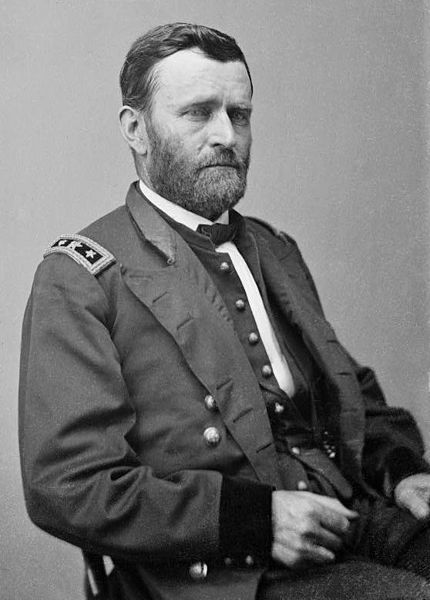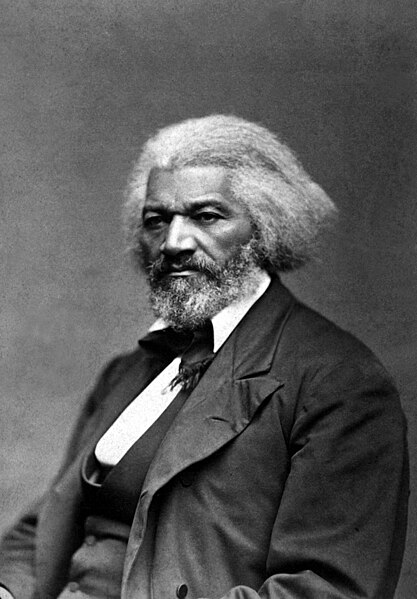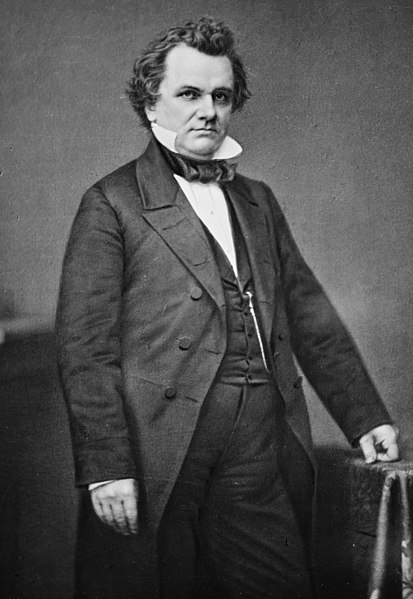The Siege of Vicksburg was the final major military action in the Vicksburg campaign of the American Civil War. In a series of maneuvers, Union Major General Ulysses S. Grant and his Army of the Tennessee crossed the Mississippi River and drove the Confederate Army of Mississippi, led by Lieutenant General John C. Pemberton, into the defensive lines surrounding the fortress city of Vicksburg, Mississippi, leading to the successful siege and Confederate surrender.
The Siege of Vicksburg - Assault on Fort Hill by Thure de Thulstrup
Statue of General Grant at Vicksburg National Military Park
Maj. Gen. Ulysses S. Grant, Army of the Tennessee, USA
Lt. Gen. John C. Pemberton, Army of Mississippi, CSA
The American Civil War was a civil war in the United States between the Union and the Confederacy, which had been formed by states that had seceded from the Union.
Frederick Douglass, a former slave, was a leading abolitionist
Sen. Stephen A. Douglas, author of the Kansas–Nebraska Act of 1854
Sen. John J. Crittenden, of the 1860 Crittenden Compromise
Ambrotype of two unidentified young boys, one in blue Union cap, one in gray Confederate cap (Liljenquist collection, Library of Congress)








